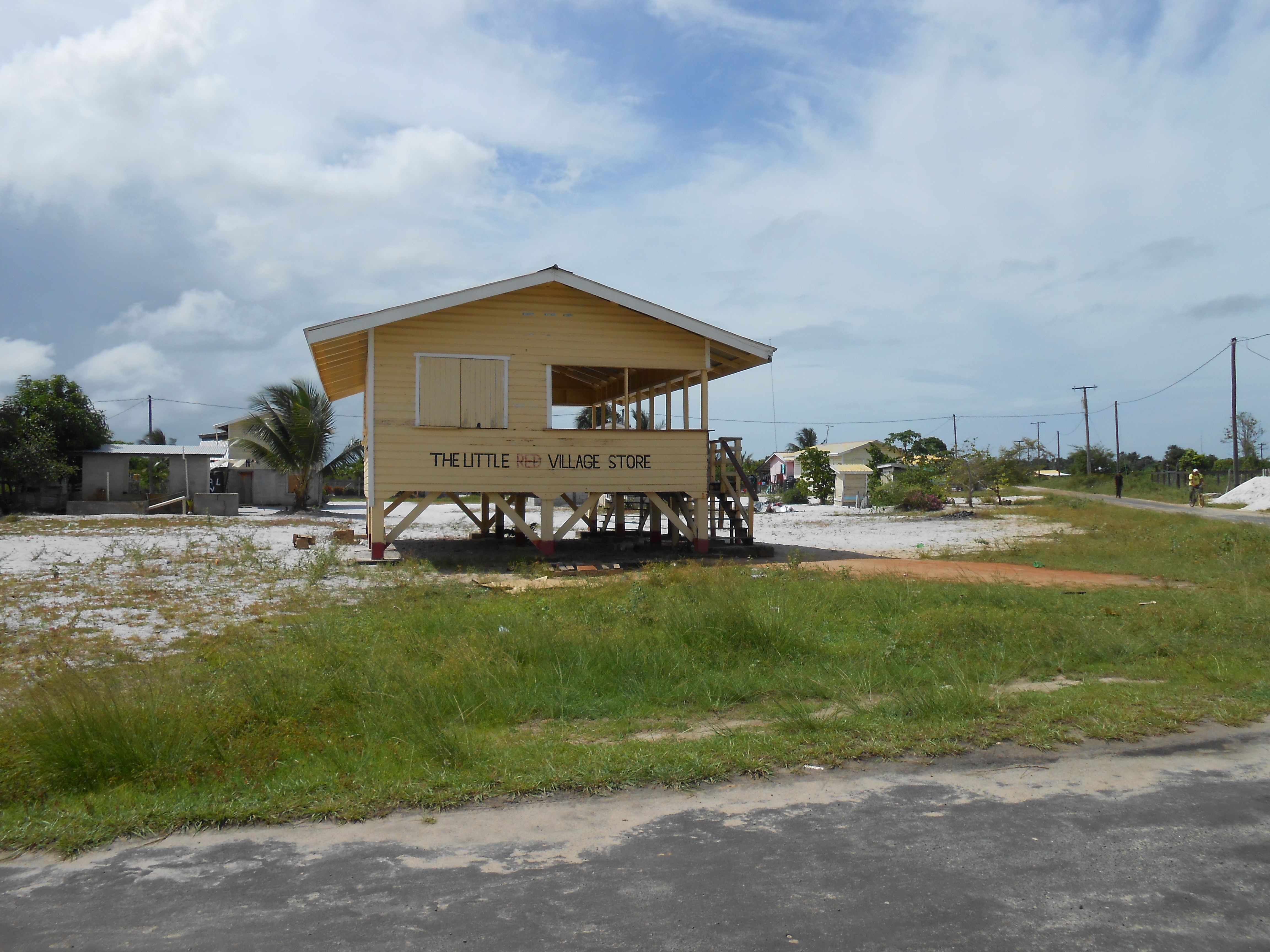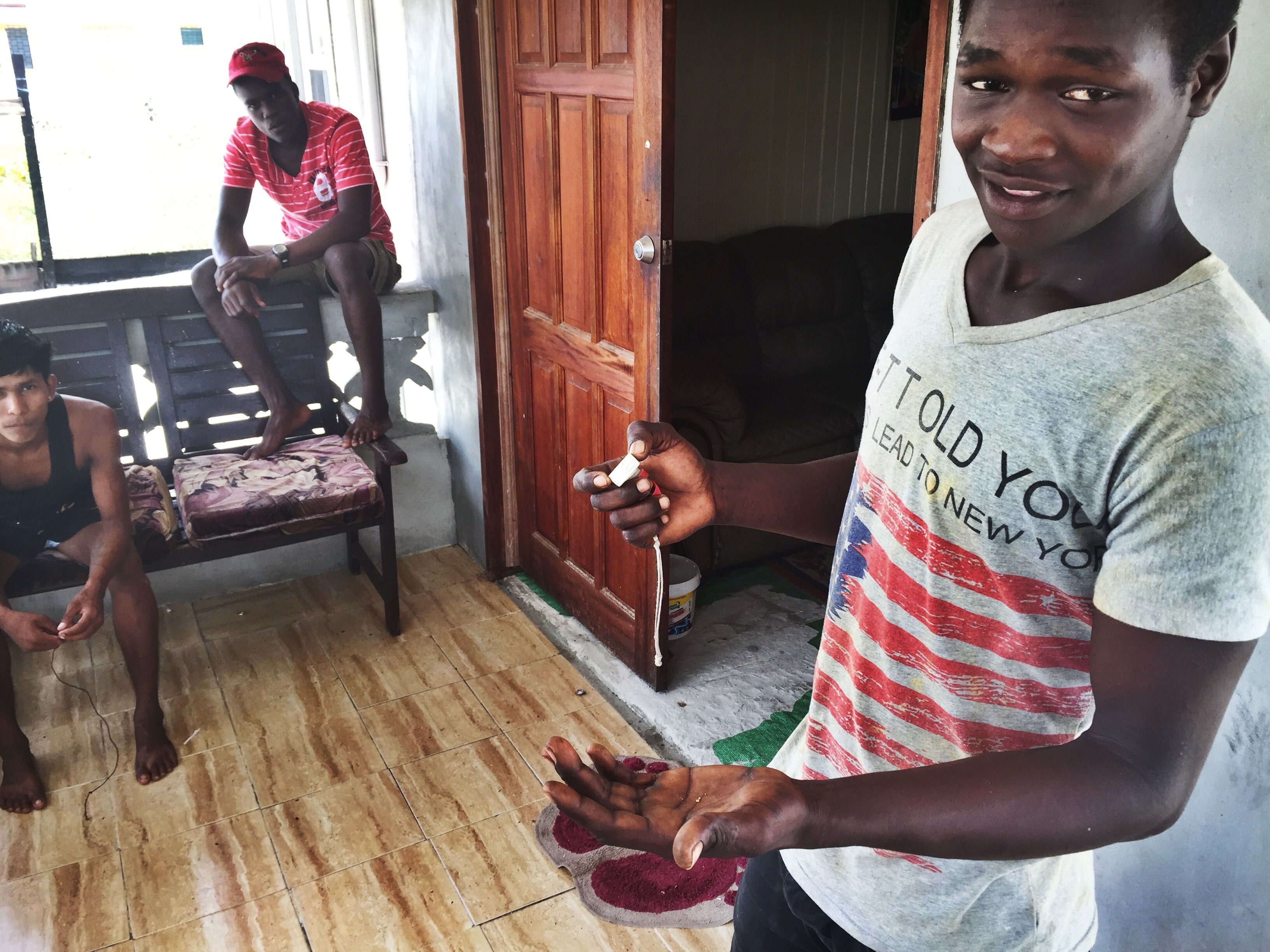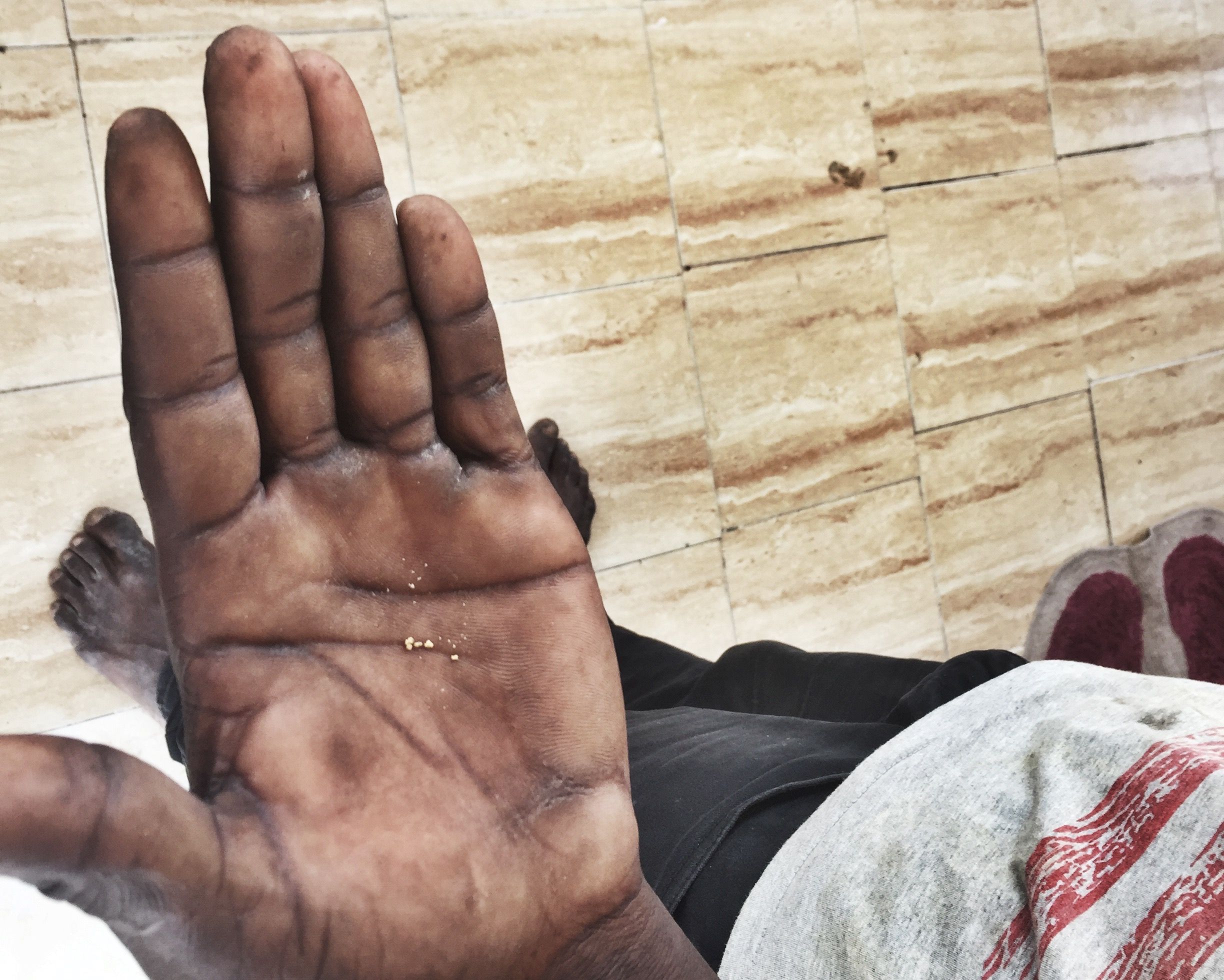Slouching over his lanky legs on the concrete stoop of his mother’s home in Red Village, Selvin, 22, pulled his broken pinky finger out of its socket and jammed it back into place. An open gash protruded from his knuckle, and he massaged his neck with a woozy gaze to his cracked feet.
“Most people who live in this place don’t have any money,” said Selvin, shaking his head. “These girls, they’ll mess around with anyone. I’ve got money and I like to party.”
In the poorest and most isolated communities in Guyana, domestic violence, murder, and suicide are part of everyday life. Of the 24 domestic-related murders since 2016, all but five occurred in isolated agricultural communities. According to the country's National Suicide Prevention Plan, Pomeroon–Supenaam Region 2 had the highest suicide rate in the country in 2014, the year the World Health Organization reported Guyana as having the highest suicide rate in the world.
While the suicide rate has become Guyana’s most-prioritized public health concern, the response has focused on suicide prevention and mental health services rather than the perpetuated cycle of violence that plagues these most vulnerable communities.
According to Anthony Autar, a lawyer, mental health advocate, and former Director of the Guyana Foundation, more than a quarter of the country suffers from undiagnosed post-traumatic stress disorder.
“People have been exposed to so many forms of alarming violent situations that haven’t been addressed in any point of their life,” said Autar. “You become so accustomed to it.”
Most taxi drivers won’t bring you to Red Village—the long, sand and loam road that bumps along for several miles from Suddie will destroy even the sturdiest vehicles. At the end lies a tiny housing project; barren, violent, and mostly forgotten from the rest of Region 2.
In 2008, people from all 10 regions of Guyana moved to Red Village in hope of a new life. Married parents with children qualified to move into new homes and pay off their debt over time. The resulting community became a melting pot that reflected the diverse composition of Guyana: Afro-Guyanese, Indo-Guyanese, and Amerindian.
“These people came over without anything, not a job,” said Juliet Coonjah, vice chairman of Pomeroon-Supenaam Region 2. “The culture is totally different because it’s a mixed village. It has the composition of the entire Guyana.”
Jobs in Red Village are scarce, however, and as many men struggled to provide for their families on the rice farms and lumberyards of Region 2, they turned to gold mining in the bush. Working in the bush, the remote interior of the country, can reap large sums of money, but trips often last four to six months, making income sporadic and limited to only once or twice a year.
Selvin has worked in the bush since he was only 15 years old. He said an average trip pays $100,000-$300,000 Guyanese dollars (US$500-1500)—but the money, which can be his family’s only source of income for an entire year, goes quick.
“You have enough you need to do with the money,” said Selvin. “You’re left with like 30,000.”
Selvin’s friend Richard, who works with him in the bush, joined him on the porch and asked Selvin about an incident that occurred two nights earlier. Selvin had been attacked by two men in a dispute over one of the man’s wives. The woman had shown an interest in Selvin, he said, and the man sought revenge when he learned of the relationship after returning from the bush. Selvin was Afro-Guyanese. The other two were Indo-Guyanese.
“When they like you, they like you,” Selvin said shrugging. “I don’t back down to them though.”
The attack, both racially and jealously charged, is normal in these isolated communities. According to Coonjah, gold mining communities are ravaged by domestic violence, economic depravity, and infidelity caused by survival.
“When [the men] are away, the women still go out and have another relationship,” said Coonjah. “They go to the money, they just sport.”
Women are sometimes left no choice but to chase wealth in order to provide their children with food and clothing. Often that wealth comes from other men while their partners are away working.
According to Miriam Robert-Hinds, a counselor at a nearby mental health facility in Region 2, racism is one of the biggest forces that drives a perpetuated cycle of violence—one that often results in murder or suicide.
“One of the things that drives [violence] sadly is racism,” she said. “It comes driven from survival. We’re only supposed to support our kind.”
Three other young men joined Richard and Selvin on the porch. They chain-smoked cigarettes, whistled at women walking down the street, and recapped the fight over and over, applauding Selvin for his strength to fight two men at once. They said they were waiting for their next opportunity to return to the bush.
“Not much to do. When there’s work, you work,” Richard said. “When there’s not you hang out, drink something you like.”
Selvin collected a couple hundred Guyanese dollars from the group and cruised down the street on his bike, returning a few minutes later with a small nugget of marijuana. They ripped open a cigarette, rolled the marijuana into a joint, and passed it around the porch.
One of the men asked Selvin to retrieve something from under his bed, and Selvin returned with a small, dusty pill container. He unscrewed the top and dumped out a tiny speck of raw gold into his palm, smiling proudly.
He sat back on the bench, inhaled the joint, tilted his head back, and exhaled the smoke into the air.
Music blared from a house down the street, and on cue with the song, Selvin looked up with a low gaze and sang, “Everything is perfect, with me…”
He shook his head and chuckled to himself, mocking the irony of the song while he sipped a beer.






